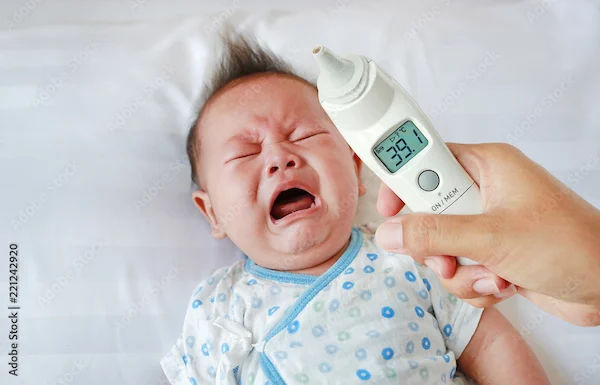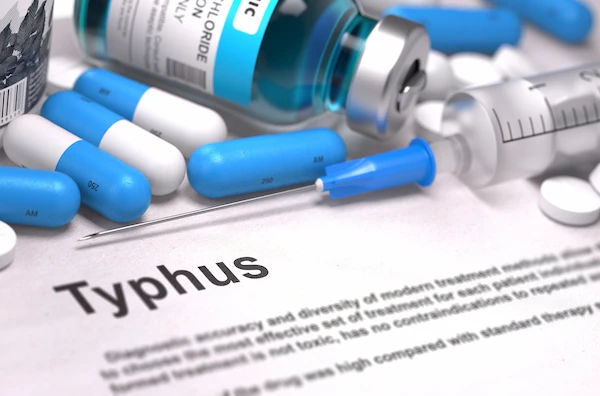Understanding Pyrexia: Causes and Treatment
Pyrexia, or fever, is a rise in body temperature often due to infections. Learn about its causes, symptoms, treatments, and when to seek medical care for safe recovery.

Written by Dr. D Bhanu Prakash
Reviewed by Dr. Rohinipriyanka Pondugula MBBS
Last updated on 21st Aug, 2025

Pyrexia, commonly known as fever, is a condition where the body temperature rises above the normal range (98.6°F or 37°C). While a fever is often a sign that your body is fighting an infection, it can sometimes indicate other underlying health issues. Understanding the causes, symptoms, and treatments can help you manage pyrexia effectively and know when to seek medical help.
What is Pyrexia?
Pyrexia is the medical term for an elevated body temperature. It occurs when the body’s immune system responds to infections, inflammation, or other medical conditions. A mild fever is usually not harmful, but a very high fever (above 103°F or 39.4°C) can be dangerous and requires prompt medical attention.
Common Causes of Pyrexia
Fever can be triggered by various factors, including:
1. Infections – The most common cause of pyrexia. Viral (flu, common cold, COVID-19) or bacterial infections (urinary tract infections, pneumonia, strep throat) often lead to fever.
2. Inflammatory Conditions – Autoimmune diseases like rheumatoid arthritis or lupus can cause fever due to inflammation.
3. Heat Exhaustion or Heatstroke – Prolonged exposure to high temperatures can lead to fever.
4. Medications – Some antibiotics, antihistamines, or vaccines may cause a mild fever as a side effect.
5. Chronic Illnesses – Conditions like cancer or tuberculosis can cause prolonged fever.
6. Teething (in babies) – Mild fever may occur when infants are teething.
Symptoms of Pyrexia
Apart from an elevated body temperature, fever may be accompanied by:
- Chills or shivering
- Sweating
- Headache
- Muscle aches
- Fatigue
- Loss of appetite
- Dehydration
- Irritability (especially in children)
In severe cases, high fever can lead to confusion, seizures (especially in children), or difficulty breathing, which requires immediate medical care.
How to Measure Fever Accurately
To check for fever, use a reliable thermometer:
- Oral (mouth) – Wait 30 minutes after eating or drinking hot/cold liquids.
- Rectal (for infants) – Most accurate for babies.
- Armpit (axillary) – Less precise but useful for quick checks.
- Ear (tympanic) – Fast but may vary based on positioning.
- Forehead (temporal artery) – Non-invasive and convenient.
When to See a Doctor
While most fevers resolve on their own, consult a doctor if:
- Fever is above 103°F (39.4°C) in adults or 100.4°F (38°C) in infants under 3 months.
- Fever lasts more than 3 days.
- You experience a severe headache, stiff neck, rash, or difficulty breathing.
- There are signs of dehydration (dry mouth, dizziness, reduced urination).
- The person is unusually drowsy or confused.
Consult Top Specialists
Treatment and Home Remedies
Medical Treatments
- Antipyretics (Fever-Reducing Medications) – Paracetamol (acetaminophen) or ibuprofen can help lower fever. Avoid aspirin in children due to the risk of Reye’s syndrome.
- Antibiotics – Only if a bacterial infection is confirmed (not effective for viral fevers).
Home Care Tips
1. Stay Hydrated – Drink water, herbal teas, or oral rehydration solutions to prevent dehydration.
2. Rest – Allow your body to recover by getting plenty of sleep.
3. Cool Compress – Apply a damp cloth to the forehead or take a lukewarm bath (avoid cold water, as it may cause shivering).
4. Light Clothing – Wear breathable fabrics to avoid overheating.
5. Avoid Alcohol or Caffeine – These can worsen dehydration.
Preventing Fever
While not all fevers can be prevented, you can reduce the risk by:
- Washing hands frequently to avoid infections.
- Staying up-to-date with vaccinations (flu, pneumonia, etc.).
- Avoiding close contact with sick individuals.
- Maintaining a healthy diet and lifestyle to strengthen immunity.
When to Seek Emergency Care?
Seek immediate medical attention if:
- A child under 3 months has a fever.
- Fever is accompanied by a seizure, rash, or difficulty breathing.
- There is persistent vomiting or severe headache.
Conclusion
Pyrexia is usually a sign that your body is fighting an illness, and most fevers can be managed at home with rest and hydration. However, high or prolonged fever should not be ignored. If you or a loved one experiences severe symptoms, consult a healthcare professional for proper diagnosis and treatment.
Need Help? If you're concerned about persistent fever, you can book a consultation with a doctor or schedule a lab test through Apollo 24|7 for quick and reliable healthcare support.
Consult Top Specialists
Consult Top Specialists

Dr Suseela
General Physician
5 Years • MBBS
Bengaluru
Apollo Medical Center, Marathahalli, Bengaluru

Dr Syed Mateen Pasha
General Physician
2 Years • MBBS
Bengaluru
PRESTIGE SHANTHINIKETAN - SOCIETY CLINIC, Bengaluru

Dr. Gunashree V L
General Physician/ Internal Medicine Specialist
3 Years • MBBS
Bengaluru
Apollo Clinic, JP nagar, Bengaluru

Dr. Manoj Jain
General Practitioner
15 Years • MBBS
Durgapura
Aarav Diabetes and Multispeciality Center, Durgapura

Dr. Anand Ravi
General Physician
2 Years • MBBS
Bengaluru
PRESTIGE SHANTHINIKETAN - SOCIETY CLINIC, Bengaluru
Consult Top Specialists

Dr Suseela
General Physician
5 Years • MBBS
Bengaluru
Apollo Medical Center, Marathahalli, Bengaluru

Dr Syed Mateen Pasha
General Physician
2 Years • MBBS
Bengaluru
PRESTIGE SHANTHINIKETAN - SOCIETY CLINIC, Bengaluru

Dr. Gunashree V L
General Physician/ Internal Medicine Specialist
3 Years • MBBS
Bengaluru
Apollo Clinic, JP nagar, Bengaluru

Dr. Manoj Jain
General Practitioner
15 Years • MBBS
Durgapura
Aarav Diabetes and Multispeciality Center, Durgapura

Dr. Anand Ravi
General Physician
2 Years • MBBS
Bengaluru
PRESTIGE SHANTHINIKETAN - SOCIETY CLINIC, Bengaluru




